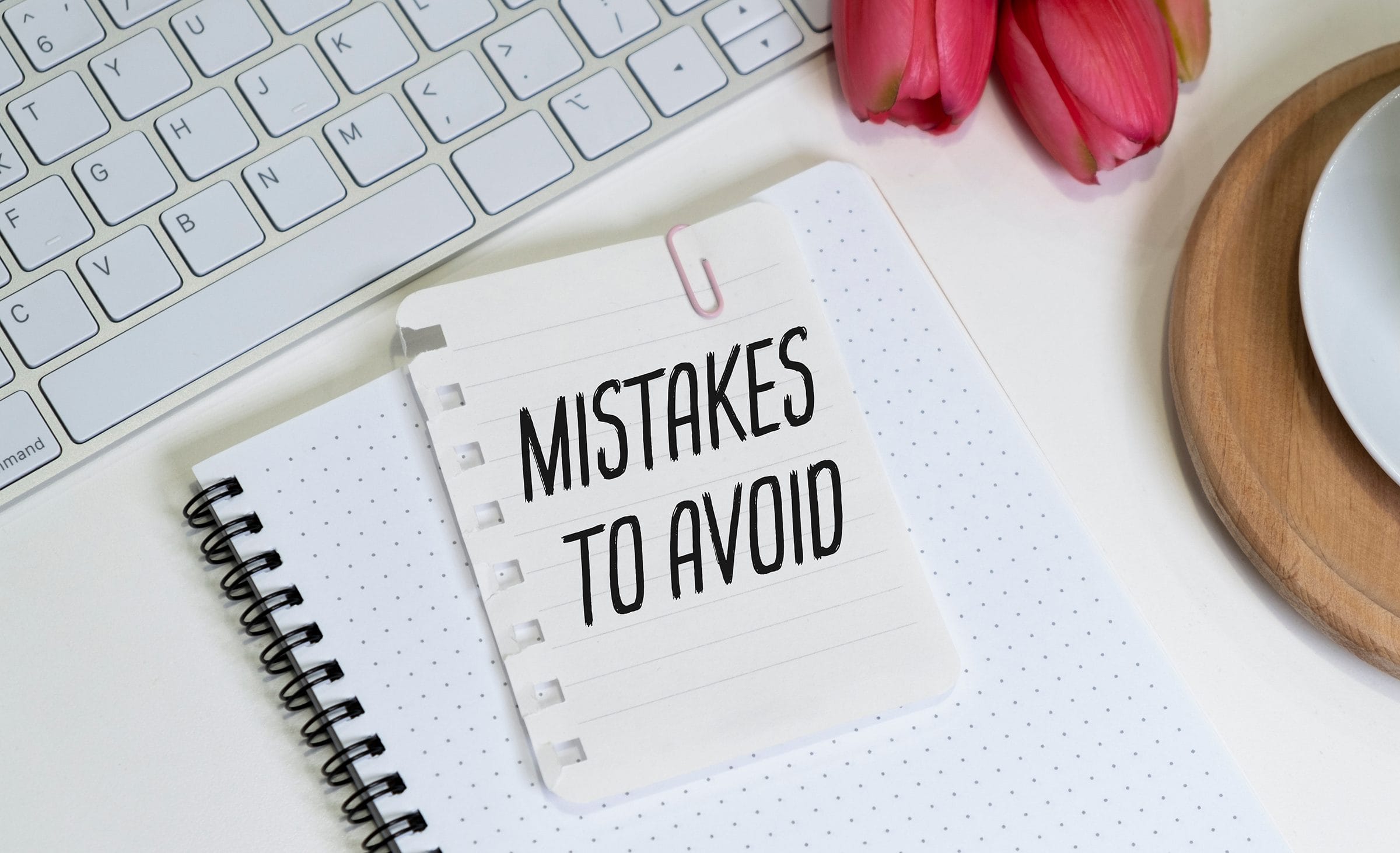

December 26, 2022
With a long list of what you need to do to take your book concept to a PDF, print-ready file, you might not be thinking about the types of things not to do. While your to-do list may be lengthy, a short but impactful list of common book printing mistakes is also a great way to double-check that your self-publishing efforts will result in a fantastic book.
No author intentionally or knowingly sends their book to print with errors. But many rely on their own editing and proofreading abilities to clean up the final draft of their book, sometimes to disastrous results. A missed punctuation here and a misspelling there can really be a big turnoff to potential readers thumbing through pages in search of their next book. And many authors who are admittedly skilled writers may simply think that their writing abilities are enough to ensure that their book turns out error- and problem-free.
However, the truth is that writers are very invested in their book’s content, as they should be, but that familiarity and connection to the text means that a writer can be looking right at an error or content problem and not see it. This book printing mistake can cause the book to go to print with a glaring error, continuity problem, or incorrect formatting in an otherwise excellent book.
A pre-print book should have as many eyes on it as possible. In fact, there are three additional types of professional views that your book should take before it is sent off to the printer. Each of these professionals is well worth the cost, since they have been trained to look for the big and small details that keep a good book from being outstanding in the eyes of the reader. Consider working with editors to avoid this book printing mistake.
As the writer, you may not have expert graphic design skills, but it is likely that you do have an opinion about how the cover of your book should look. But your own ideas about how to make your book stand out from others may actually be a negative instead. One of the biggest book printing mistakes in self-publishing is for an author to design the book cover themselves.
In another instance of calling in an expert to support your efforts, using a cover design expert is the best way for a self-publishing author to make sure that the cover does exactly what it is supposed to do: attract the right reader. Professional cover designers can craft a cover that will catch the eye of a potential reader by presenting your book’s theme and genre in a way that will entice readers. These experts will help by focusing the cover’s design with the genre norms, capturing potential readers’ expectations accurately, and including elements on the cover that will help the book sell more books and help you avoid this book printing mistake.
After all the hard work you have put into the ideation, drafting, revising, and formatting of your book, it is surely worth a lot of money, right? Unfortunately, book pricing is not based solely on your efforts. If priced too high, your book will be skipped over by potential readers for another, more affordable option. If priced too low, your book may seem like too good of a bargain, diminishing the value of your work and abilities. One of the important book printing mistakes authors don’t want to make is thinking their efforts decide the price of their book.
Since the point of writing a book is to get the story into the hands of readers, the book should be priced enticingly. For authors who have already built up a fan base, book pricing can be on par with other indie books in the marketplace. But for a new author, discounting your book is a good idea so that readers will be encouraged to try out a new writer’s work. For subsequent or later books, consider marking down your first book and bundling it with its sequel, for example, to encourage new readers to give your work a try as well as boost your credibility by subtly informing readers that you are a multiple-title writer.
While there are millions of people who love to read, every one of them is not a potential reader for your book. And the sooner an author understands who exactly their reader is, the more effective they can be in marketing and selling their book to them. Big publishing houses sometimes spend thousands of dollars on marketing campaigns. While self-published authors won’t or can’t do that, they do need to consider how best to sell their books and avoid this book printing mistake.
A solid marketing plan can help an author reach potential readers as well as build up their own brand as a writer so that all future work will be on the radar of potential readers. And a marketing plan begins with knowing who the potential readers are for your book.
With so many potential minefields that self-published authors need to sidestep, just making it all the way to the point where a book is ready to be printed is a huge accomplishment. But once you have worked with professional editors and designers to help your book look its best and developed a solid marketing plan and pricing strategy, you can feel confident that you are sidestepping the most common book printing mistakes. Authors that work with a trusted printer like Publishing Xpress can feel confident that their book will turn out beautifully because Publishing Xpress has been partnering with self-published writers for decades. And securing a proven printing partner is the perfect way to transition from writer to published author.
© 2025 Publishing Xpress. All Rights Reserved.